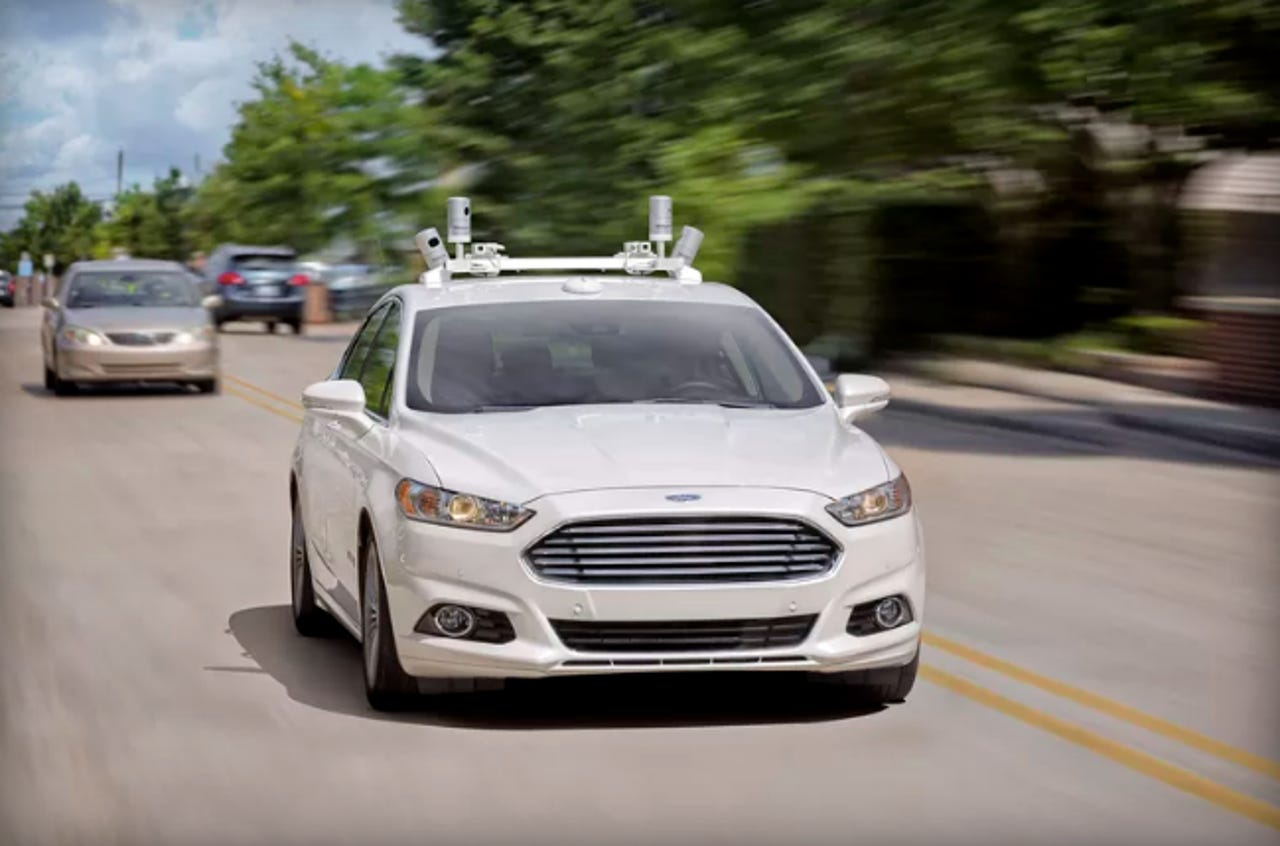Ford CEO promises autonomous vehicles for mass transit by 2021


Image via Ford.
Ford on Tuesday announced plans to release fully autonomous and driverless ride-sharing vehicles by 2021.
Ford CEO Mark Fields, speaking at the automaker's Research and Innovation center in Palo Alto, also pledged to double the company's Silicon Valley workforce and expand its facilities by 150,000 square feet by the end of this year.
Featured
Additionally, Ford and Chinese search engine company Baidu are investing a combined $150 million in Velodyne LiDAR, makers of light, detection and ranging technology for 3D digital imaging.
For self-driving cars, Velodyne's technology uses a combination of light, cameras and laser-based sensors to assess a surrounding environment and create a 360-degree view that can be used for mapping, localization, object identification and collision avoidance. The Morgan Hill, Calif.-based company wants to use the funding to improve design, expand production and accelerate mass adoption of its technology.
"Ford has a long-standing relationship with Velodyne and our investment is a clear sign of our commitment to making autonomous vehicles available for consumers around the world," Raj Nair, Ford's CTO, said in a statement.
As for Ford, the investment is the automaker's latest step to advance autonomous vehicle technology. Last month the company joined a $6.6 million funding round for 3D map-maker Civil Maps.
Ford previously joined Google, Uber, Lyft, and Volvo to create the Self-Driving Coalition for Safer Streets group, which aims to further the concept of self-driving cars and influence legislation. Ford also launched Ford Smart Mobility this year, an effort focused on the development of mobility services and technology.
Since becoming Ford's CEO in 2014, Fields has prioritized research and development of self-driving cars. On Tuesday, he outlined his vision for the technology and the role he hopes Ford will play in the long run, which includes providing autonomous cars for the next 100 years.
Ford's CTO Nair is equally optimistic about the prospects of self-driving vehicles and Ford's ability to advance in areas where current technology is lacking.
Nair said Ford will aim to develop both driver assisted and fully autonomous vehicles, but admitted that there are inherent safety risks to handing control from car to human back and forth. For that reason, Nair said he believes autonomous cars for personal use have "economics that don't make sense," but driverless ride sharing does.
With that in mind, Ford's goal is to build a vehicle to the SAE Level 4 standard of automation (meaning no steering wheel or peddles) to be used mostly in urban, geofenced regions to supplement public transportation. Ford's vehicles for personal use will focus more on driver-assist functionality, in which humans still operate the vehicle.
SEE ALSO: Ford: Self-driving cars are five years away from changing the world | Ford's autonomous car takes the fear out of driving in the dark | Ford triples size of autonomous Ford Fusion Hybrid test vehicles fleet | Ford tests collaborative robots in German Ford Fiesta plant